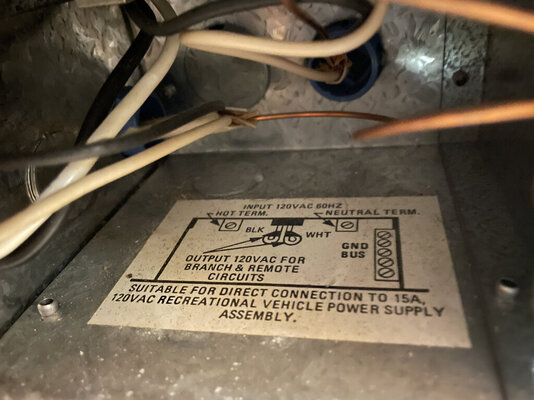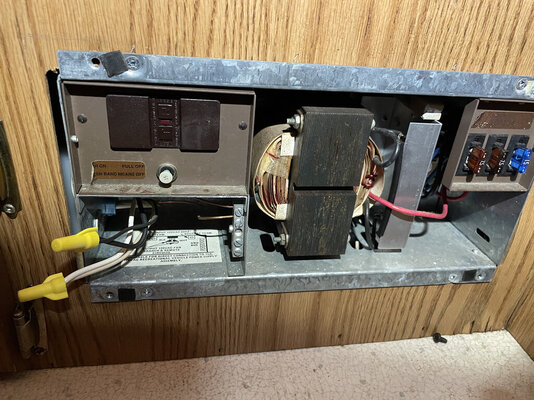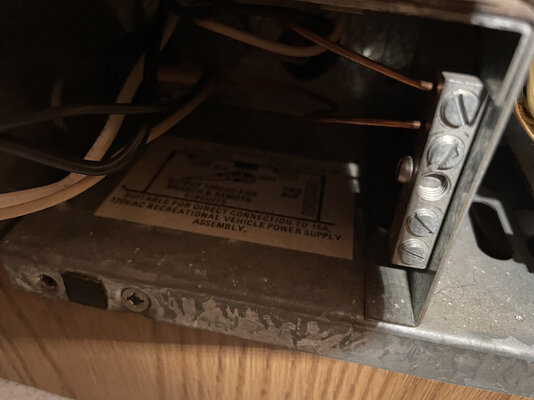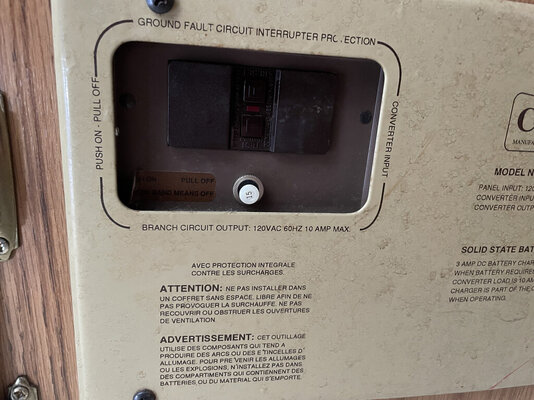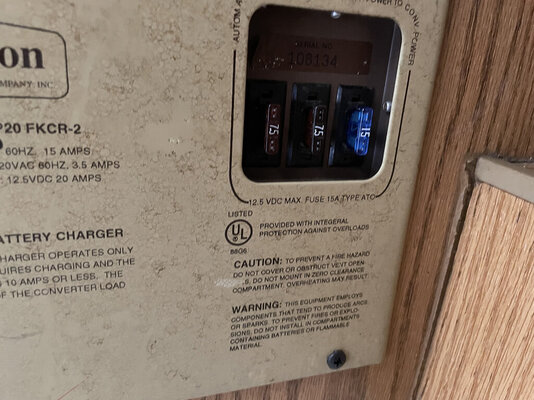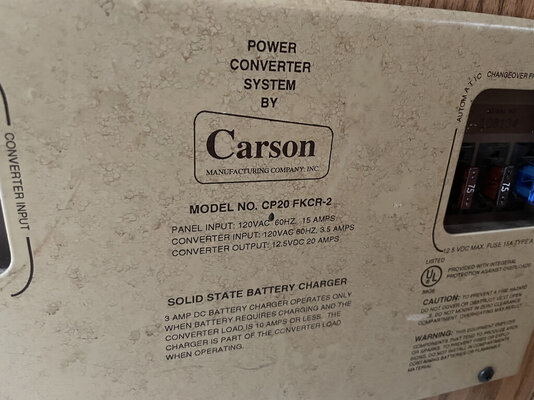Hello forum! I am a first timer here and to any forum on the internet! I bought an old '96 Jayco 1206 pop-up camper off a friend two years back just to try something new and different! WE ARE LOVING IT! I have this camper fully functional and everything works in it... I want to connect a DC12V battery to the system but have no clue if or how to do that. I have attached the photos of the power converter (cover and inside) and the original owners manual. It says the camper gets power when plugged into the car through the hitch connector but I still need to test that when traveling long distances. I am looking to connect a battery or two on the trailer and connecting it directly to the power converter. I am just wondering if any "vintage" pop-up owners out there have done this. I thank you and appreciate all your feedback.
You are using an out of date browser. It may not display this or other websites correctly.
You should upgrade or use an alternative browser.
You should upgrade or use an alternative browser.
Carson Power Converter CP20 FKCR-2 for my 1996 Jayco pop-up camper
- Thread starter crudella
- Start date
The friendliest place on the web for anyone with an RV or an interest in RVing!
If you have answers, please help by responding to the unanswered posts.
If you have answers, please help by responding to the unanswered posts.
Mark_K5LXP
Well-known member
Is there a spot for a battery on the tongue? With a 3A charging current you're not going to end up with much of a battery but likely with a popup you don't need much. When I had a popup I relocated the battery to under the dinette bench where the charger was and used a small sealed (U1) battery with a quick disconnect on it. Changed the lights to LED and added some 12V and USB outlets fore, aft and by the sink cabinet. I will point out that the regulation of that charger isn't ideal so I wouldn't leave it plugged in and charging for extended periods (weeks or months).
Mark B.
Albuquerque, NM
Mark B.
Albuquerque, NM
Mark_K5LXP
Well-known member
My logic for moving the battery was to protect it from elements, theft and damage. It's a small battery and easily fit under the dinette bench. The QD allowed for easy removal for charging, storage or powering other stuff. I removed the 20lb LP tank as well, the only thing it ran was a 2 burner stove and I just used 1lb bottles for that. I had notions to put a gear/tool box on the now empty tongue for more storage but I ended up solving that problem with a class A.
Mark B.
Albuquerque, NM
Mark B.
Albuquerque, NM
Ex-Calif
Well-known member
Definitely an old school "limited capability" charger. Probably good for a single battery / pop-up trailer. Probably not the most advanced charge profile.
If you have an ohm meter measure the voltage for polarity on the DC side. I am guessing black goes to trailer ground.
Then it's pretty much a matter of running a red leg to the battery +, a ground from the batter - and if/when you locate the 7-Pin power running a red from there to either the battery positive or to the tap in near the 12V DC fuse box.
Battery on the tongue means an "easy run" from the 7-Pin but a longer run to the DC bus.
If you have an ohm meter measure the voltage for polarity on the DC side. I am guessing black goes to trailer ground.
Then it's pretty much a matter of running a red leg to the battery +, a ground from the batter - and if/when you locate the 7-Pin power running a red from there to either the battery positive or to the tap in near the 12V DC fuse box.
Battery on the tongue means an "easy run" from the 7-Pin but a longer run to the DC bus.
This pop-up is my first chapter of my RV experience! Eventually I will get to a Class-A!!! Many thanks for your time and feedback...My logic for moving the battery was to protect it from elements, theft and damage. It's a small battery and easily fit under the dinette bench. The QD allowed for easy removal for charging, storage or powering other stuff. I removed the 20lb LP tank as well, the only thing it ran was a 2 burner stove and I just used 1lb bottles for that. I had notions to put a gear/tool box on the now empty tongue for more storage but I ended up solving that problem with a class A.
Mark B.
Albuquerque, NM
CharlesinGA
Well-known member
Converter is 20 amp DC output according to the sticker on it. However it will cook a battery if left connected for long periods of time. OK to camp with, but don't leave it hooked up at home.
Charles
Charles
Ex-Calif
Well-known member
This sticker indicates that it would be OK to leave connected. Although when parked up at home for a pop up, all electrics off is not a bad idea.Converter is 20 amp DC output according to the sticker on it. However it will cook a battery if left connected for long periods of time. OK to camp with, but don't leave it hooked up at home.
Charles
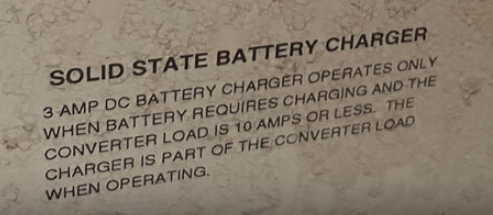
CharlesinGA
Well-known member
I have no idea what the difference is between battery charger and converter is in this instance, but it does say converter output is 12.5v 20 amps
Charles
Mark_K5LXP
Well-known member
There's actually a decent manual online. The schtick to this unit is it's relay controlled, kinda like the older magnatek. In converter mode it's piping full wave rectified DC ~20A directly to the trailer loads, the DC supplied to the battery is voltage and current limited, to 3A max and unknown voltage. Even at this innocuous current level it still has the potential of overcharging a battery long term, so I wouldn't trust it until I knew what the setpoints were. Being single stage if you set the voltage for long term float it would take literally a week or more to bring up even a small-ish battery (say under 75Ah) so I would guess it's set a little towards the hot side, which is what fries batteries long term. It does have a tweaker, a basic divider with a zener so one could set it for a 'safe' level. First order response is to just replace it with a new converter but for an application like this which might amount to a few lights and a vent fan I'm not sure a new converter would work better. Just be mindful of state of charge and this converter can still check the box.
Mark B.
Albuquerque, NM
Mark B.
Albuquerque, NM

